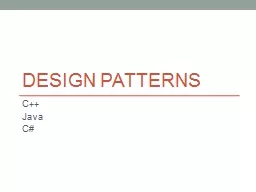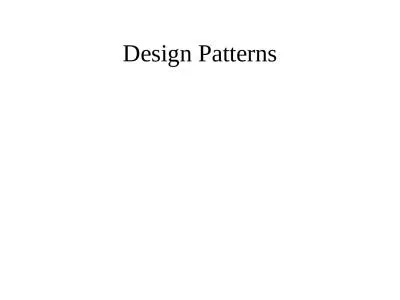PPT-Design Patterns C Java
Author : liane-varnes | Published Date : 2018-03-17
C Design Patterns In software engineering a design pattern is a general reusable solution to a commonly occurring problem in software design A design pattern
Presentation Embed Code
Download Presentation
Download Presentation The PPT/PDF document "Design Patterns C Java" is the property of its rightful owner. Permission is granted to download and print the materials on this website for personal, non-commercial use only, and to display it on your personal computer provided you do not modify the materials and that you retain all copyright notices contained in the materials. By downloading content from our website, you accept the terms of this agreement.
Design Patterns C Java: Transcript
Download Rules Of Document
"Design Patterns C Java"The content belongs to its owner. You may download and print it for personal use, without modification, and keep all copyright notices. By downloading, you agree to these terms.
Related Documents











![[BEST]-Easy Learning Design Patterns Java (2 Edition) Build Clean and Reusable Object-Oriented](https://thumbs.docslides.com/970780/best-easy-learning-design-patterns-java-2-edition-build-clean-and-reusable-object-oriented-code-easy-learning-java-and-design-patterns-and-data-structures-and-algorithms.jpg)
![[READ]-Easy Learning Design Patterns Java (3 Edition): Build Clean Code and Practice Real](https://thumbs.docslides.com/973937/read-easy-learning-design-patterns-java-3-edition-build-clean-code-and-practice-real-example-java-foundation-design-patterns-data-structures-algorithms.jpg)
